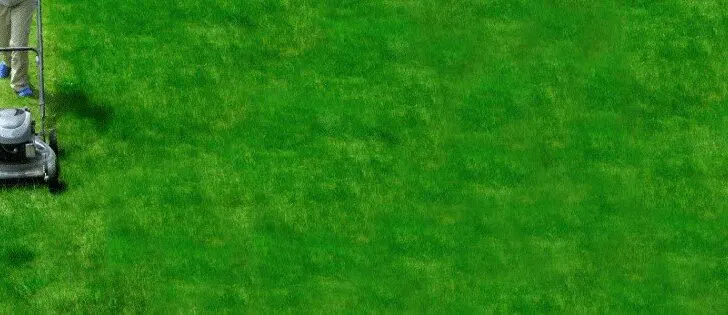Are you dreaming about a perfectly green lawn that is visually beautiful and healthy? A thick, lush green lawn is a canvas to a beautiful garden that blooms with flowers and plants. It, therefore, requires regular maintenance and focused expert care because if the lawn is healthy, the garden will automatically appeal to the eye.
Here is a comprehensive guide with the essential lawn care basics for a remarkable lawn.
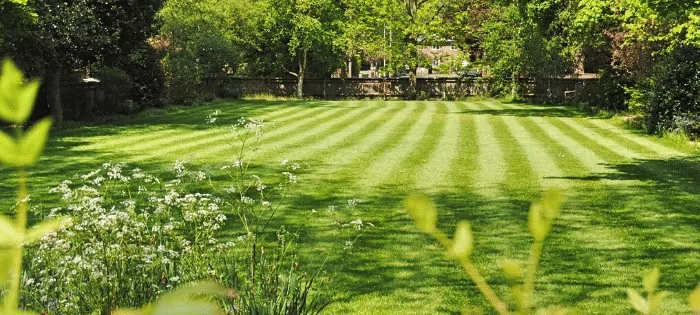
Table of Contents
Lawn Care Basics Summary
| Aspect | Key Points | Recommendations |
|---|---|---|
| Lawn Mowing | Vital for healthy lawn growth. Incorrect mowing can lead to problems. | Cut only one-third of the grass. Schedule mowing properly. |
| Fertilization | Important in spring when soil temperature is 50-55°F. | Use slow-release fertilizers with the right nutrient count. |
| Watering | Over-watering is common. Adequate moisture is needed. | Water on alternate days if deeply watered once. Wait a couple of days before the next watering cycle. |
| Aeration | Helps in nutrient absorption and root growth. | Use plug or spike aerators. Best done during growing seasons. |
| Grass Seed | Quality of seed affects lawn quality. | Use best available seeds and spread evenly. |
| Types of Grass | Climate affects choice between cool-season and warm-season grasses. | Use a blend of both types for year-round greenery. |
| Common Problems | Includes crabgrass, Yellow Nutsedge, compacted soil, and brown patches. | Use turf grass, herbicides, proper aeration, and pH level adjustments. |
| Mistakes to Avoid | Cutting grass too short, over-watering, over-fertilizing, planting seeds too close, etc. | Follow proper mowing heights, watering schedules, and read fertilizer labels. |
5 Easiest Tips for a Remarkable Lawn

1. Lawn Mowing
Lawn Mowing is vital for the growth of a healthy lawn, which is why mowing your lawn the right way is crucial. It may seem simple, but every time you run a lawnmower on the grass, you unconsciously deal with or give rise to common lawn problems.
If you mow the right way and take all accurate measures, weed seeds will shade out, preventing germination and further grooming the healthy turf. However, if you tend to mow irregularly with incorrect measures, there is a strong chance that you will end up with an unhealthy lawn that struggles to survive.
Therefore, you must schedule your lawn mowing promptly to avoid cutting the grass too short. It would help if you never forgot to cut only one-third of the grass with your lawnmower, strictly ensuring you leave out the other two-thirds.
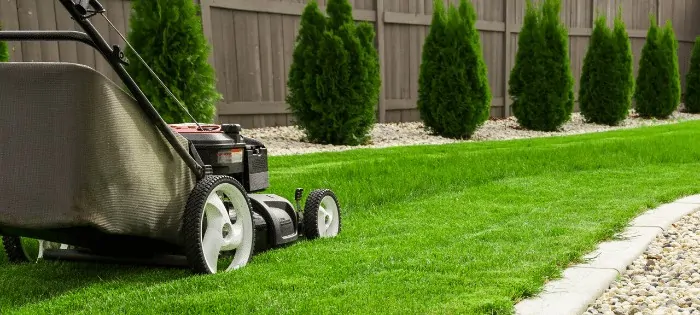
2. Fertilization
Fertilize your property during spring when the soil temperature hits the ideal range of 50-55 degrees Fahrenheit. You must also know the nutrient count on the fertilizer packaging to know what’s good for the soil.
Nitrogen is identified as the most common and prime ingredient for lawn fertilizers; however, each grass type requires a varying amount of nitrogen for growth. Slow-release fertilizers are considered the best lawn fertilizers as they are manufactured to decompose nutrients over several weeks, giving the soil the right amount of constant nourishment with time.
The fertilization routine you follow for lawn care not only elevates the appearance of the lawn but also cuts down the cost of lawn maintenance. So apply the right fertilizer for the right growth of your lawn.
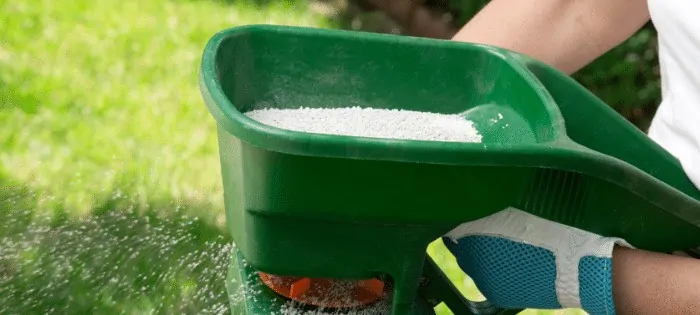
3. Watering your Lawn Just Right!
How often do you water your lawn? Providing adequate water content to the grass for sufficient moisture allows the soil to survive long periods of drought and hot weather conditions. Most people tend to over-water their lawn by watering it every day. However, the watering routing should be followed on alternate days if you have deeply watered the lawn once.
You should wait a few days before repeating the watering cycle, as this allows the soil to soak the nutrients and dry out healthily. Then you may water again.
To maintain your lawn’s health and appearance, you must keep feeding it with water and nutrients, but you must understand how to manage the watering lawn cycle.
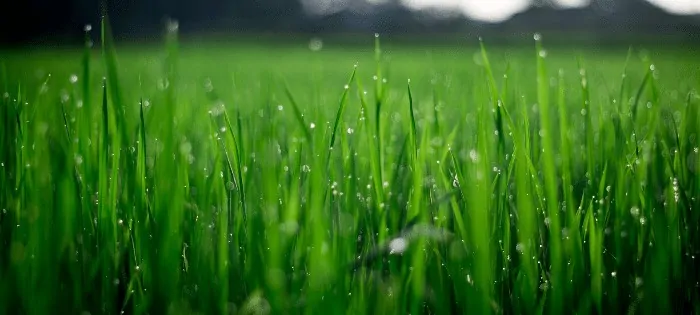
4. Lawn Aeration
Aeration is the process of ventilating oxygen deep down to the roots. Aeration must be employed to ensure that the soil receives all essential nutrients to allow a lush green growth of grass.
Implementing aeration penetrates oxygen and moisture in the soil, nurturing a healthy lawn. All you have to do is dig small holes at random points in the soil, which helps the deep growth of roots, producing a stronger and fresher lawn.
Homeowners often struggle to identify when their lawn care routine requires the addition of lawn aeration. The growing season is ideal for aeration because the soil can conveniently recover and fill up the hollow areas.
Aerate the lawn during slightly cooler seasons in spring or fall. Two key aerating tools can be used for aeration: a plug aerator and a spike aerator. A plug aerator removes a plug of grass and soil, while a spike aerator allows you to plug holes in the soil.
5. Seeding Grass The Right Way
Prepare the soil on a leveled ground, removing debris and stones, and then sprinkle the seeds evenly over the area. Clustered grass seeds in one area may cause a nutrient fight between the seedlings. Grass growth will be too weak and thin in such areas. Therefore, ensure to distribute the seeds well.
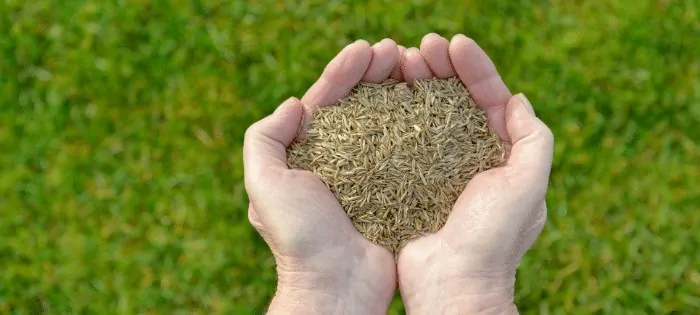
Types of Grass
The start of a great lawn is marked with the right type of grass.
Climate plays a vital role in helping you choose a grass type that will suit the weather conditions in your area. Generally, there are two broader categories of grasses: cool and warm.
It is commonly observed that warm-season grasses lose life under cold weather while cool-season grasses drowse during warmer months. Therefore, it is suggested that for a green lawn that has a lively appearance all year round, you pick a blend of both categories of grasses.
Keep the grass seedbed moist for healthy grass growth to enhance germination.
Warm-Season Grasses
- Bermuda Grass: Perennial grass that is tough and perfect for warm regions. Bermuda grass has a high drought and salt tolerance. Once established, it is a fast grower.
- St. Augustine Grass: St. Augustine grass is a warm-season grass known for its broad, flat blades. It thrives in coastal areas with warm, humid climates.
- Centipede Grass: Centipede grass is a drought and heat-tolerant grass usually grown in the Southern U.S. It is light green.
- Zoysia Grass: Zoysia grass is dense and easy to care for. It is drought-resistant and only requires little water.
- Bahia Grass: Bahia grass is a light green grass that is heat-tolerant and well-suited for full sunlight. It needs little care and only attracts only a few insects.
Cold Season Grasses
- Kentucky Bluegrass: Kentucky bluegrass is a grass that grows very dense and creates a soft lawn texture. It is easy to plant and care for but does not tolerate shade very well.
- Perennial Ryegrass: Perennial ryegrass has a nice dark green color. The leaf blades shine in the light. It is soft, easy to cut, and tolerates shaded areas well.
- Timothy Grass: Timothy grass or Phleum pratense is a non-native grass species. It is gray to blue colored and often used as grass for livestock. This grass is popular in Illinois and grows 2-4 feet tall (60-120 cm).
- Bentgrass: Bentgrass grows well everywhere, from shaded areas to full sunlight. Bentgrass is a cold-season turf grass that is often used on golf courts.
- Fescue Grass: Fescue grass grows in shaded areas and in full sun. It is drought-tolerant and sturdy. Tall-Fescue has a nice green color and should not be mowed too short. Four inches is an ideal height for Tall-Fescue grass (10 cm).
COMMON LAWN PROBLEMS
It’s difficult for a homeowner to identify all prevailing lawn problems to which a lawn is susceptible.
Here is a list of common lawn problems with solutions to help you plan your lawn care routine.
Crab Grass
Crabgrass is described as an annual weed that germinates during spring and summer. It tends to dominate the healthy growth of perennial grass in your lawn, leaving it in a thinned condition. The growth of crabgrass can be prevented by laying down turf grass in the lawn and allowing it to grow under nourished growing conditions. Eventually, the grass will spurt out weeds, preventing the growth of spikey crabgrass.
Yellow Nutsedge
Another form of weed that threatens your lawn is the Yellow Nutsedge. It competes with healthy grass for sunlight and other essential nutrients, affecting soil fertility. This sedge is limiting the production of vegetable crops, and if not controlled timely, it may erode the entire lawn. The solution to this lawn problem is to pull out the sedge while it is in the early stages of growth and spray herbicides to control the spreading.
Compacted Soil and Improper Aeration
Any compacted soil that contains significantly large amounts of clay content may give rise to weeds. Aeration prevents this by giving oxygen and water needed by the lawn—however, improper aeration build-up thatched areas in the soil. During seasons the grass grows, be sure to aerate the lawn as doing so will help fight any possible conditions of lawn diseases.
Brown Patches
You must have noticed dried brown patches over multiple areas in your lawn. This phenomenon is commonly identified as a summer lawn disease. Damage caused by this type of disease is visible almost immediately. When you walk across the lawn, a brown patch can be identified with a spikey yet spongey feel on the feet. These brown patches can be treated by increasing the soil’s pH level.
How to Avoid Common Lawn Care Mistakes
Learning to take good care of your lawn comes easily with readily available information on gardening topics, ranging from lawn diseases to planting tools. But what about the gardening mistakes that we tend to make regularly?
When made repeatedly, these unconscious mistakes act as a risk alarm for our gardens, so we must analyze our lawn care routine and do things correctly.
- The right grass height – Avoid cutting your grass too short. Give your lawn time and allow the grass to grow high enough to mow properly. Repeatedly mowing the grass leads to scalping the lawn, washing away the fertility of the soil in the due course of time.
- Using too much water – Be careful with the amount of water you hose out to the lawn. Do not drown the soil in water, as it will reduce the life of your lawn. Be moderate with the water level, create a lawn watering schedule, and follow it strictly.
- Overfertilizing – Refrain from using extra fertilizers for the lawn just because you read somewhere that fertilizing is good for the soil. It proves beneficial only if you fertilize the soil in a controlled amount, or else it eats away the natural tendency of the soil to germinate seeds for grass growth. Carefully read the fertilizer label and follow the instructions.
- Give plants the space they need– Planting seeds close together will make them compete for sunlight and water, affecting their growth. Avoid planting seeds together and give them enough space to grow.
- Digging wet soil – If you dig the soil while wet, you’ll break down the soil structure, damaging its natural fertility. It is, therefore, suggested that you wait until the soil is no longer saturated and then carry out your gardening task.
- Aeration tools – Rather than poking holes of irregular sizes, try to use an aerating tool to get the best results. Manually poking holes are considered less effective and give rise to compaction around the holes in the lawn area.
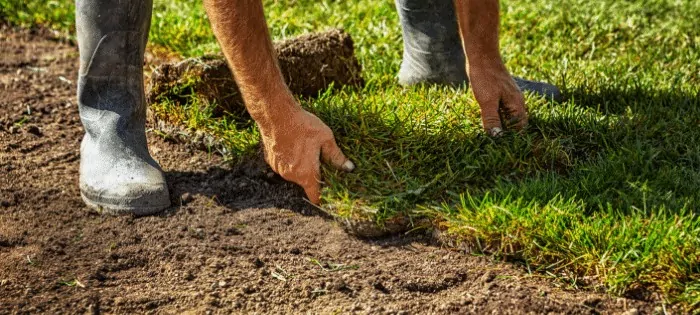
Fall Lawn Care
To care for a lawn in the fall, reduce fertilization and watering as a general rule of thumb. Fall is the season when temperatures get colder, and your grass is starting to grow slower. In addition, days become shorter, and there is less natural sunlight. You need to differentiate between cold-season grasses and warm-season grasses.
According to How to with Doc, falls is the ideal season to reseed and overseed cold-season grasses. Since temperatures get colder, these grasses will thrive and grow more vigorously. Therefore a well-balanced fertilizer is recommended for cold-season grasses.
FAQ
How to determine the height of the lawn for mowing?
Several factors contribute to determining what height to cut the lawn at. The grass must be mowed a lot higher during high temperatures to withstand the hot weather conditions. However, the grass should be cut at shorter heights as the temperature cools. Contact lawn care services near you for a guided mowing service.
Is lawn scalping recommended?
Scalping is recommended in certain cases only. It only helps in the clearing of winter debris while exposing the soil to the sunlight. This additional exposure to sunlight warms up the soil deep down. But overall, scalping is particularly beneficial for one type of grass, Bermuda. A healthy lawn only requires slightly scalping over the surface, commonly called simple grass cutting.
How often should I water during drought/dry season?
To maintain the health of your lawn during seasons of drought and dryness, it is suggested that you water your lawn every 4-5 days for at least an hour, covering every part of the lawn. Please note that timely watering is the key to a healthy lawn, preventing any signs of damage and lawn disease.
How can lawn problems be prevented?
Regular mowing and watering are the two concrete methods to fight lawn disease. Mow your lawn regularly with timely watering. However, in case of serious damage to the lawn, contact lawn and gardening expert companies for assistance.
What’s better, an Aeration or a De-thatch?
Any lawn needs de-thatching when a major part of the grass turns brown. This process should be employed between late March and mid-April. However, there is no need to de-thatching your lawn successively each year. On the other, Aeration maintains the health of your lawn and can be done each year to allow the grass to breathe.
What is an overgrown lawn?
The length and height of the grass in your lawn determine how overgrown your lawn is. Every lawn grown under varying conditions is prone to different overgrowing types. Mow your lawn regularly to avoid your grass growing up ankle length.
The last Grass
Lawn maintenance may be a stressful task at times, but by using proper lawn care products and following a regular lawn care schedule, you’ll be on the right track to get the lawn you’ve been daydreaming about.

Daniel has been a plant enthusiast for over 20 years. He owns hundreds of houseplants and prepares for the chili growing seasons yearly with great anticipation. His favorite plants are plant species in the Araceae family, such as Monstera, Philodendron, and Anthurium. He also loves gardening and is growing hot peppers, tomatoes, and many more vegetables.

